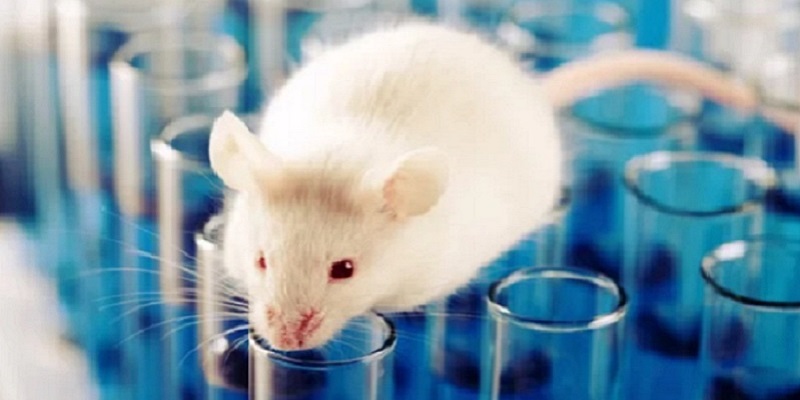The ultimate goals of preclinical studies are to accurately model, in animals, the desired biological effect of a drug in order to predict treatment outcome in patients (efficacy), dosing and administration route (pharmacokinetic, bioavailability), and to identify and characterize all toxicities associated with a drug in order to predict adverse events (safety) for informed risk assessment.
In vivo assays are developed in accordance with the guidelines of European Union Directive 2010/63/EU on the protection of animals used for scientific purposes. Studies are performed in the Animal Facilities of the Center of Biomedical Investigation of the University of Granada (Granada, Spain).
Preclinical Development
Bioanalytical Assays
Standard bioanalytical method development
- Sample preparation method development, chromatographic method development, detection method development and optimization
Advanced bioanalytical method development
- Linearity and sensitivity
- Accuracy and precision
- Selectivity
- Stability
- Recovery
Analytical Technologies
- High Throughput Injector CTC Pal Xt
- 5600 QTOF Mass Spectrometer (SCIEX)
- UPLC Cromatograph Agilent 1290 Infinity
- Triple Quad mass Spectrometer API4000 (SCIEX)
- GC-MS: Agilent 8890 GC System-5977B MSD
Analytical tools
- LC-MS/MS Agilent 1290-API4000 (SCIEX)
- LC-HRMS Agilent1290-Triple TOF5600 SCIEX
- Liquid handlers equipped with on-deck accessories; Freedom EVO, Tecan; Biomek FX and i7, Beckman, Echo® Acoustic Liquid Handling System, Beckman; EvolutionP3, PerkinElmer; and software specifically designed to automate sample preparation procedures
ADME-tox
Drug absorption
- PAMPA (Parallel artificial membrane permeability assay). Detection method: LC-MS/MS and LC-HRMS
- Caco-2 cell permeability assay. Detection method: LC-MS/MS and LC-HRMS
Drug metabolism
- CYP Inhibition: CYP1A2 / CYP2C8 / CYP2C9 / CYP2C19 / CYP2D6 / CYP3A4. Detection method: LC-MS/MS
- CYP Induction (cryopreserved hepatocytes). Detection method: LC-MS/MS
- CYP P450 Reaction phenotyping. Detection method: LC-MS/MS
- Reactive metabolite assessment. Detection method: LC-MS/MS & HRMS
- Metabolite stability (Criopreserved hepatocyte & liver microsomes) in different species (human, mouse, rat, dog, monkey, pig). Detection method: LC-HRMS
- In vivo and in vitro metabolic profiling (Phase I and II). Comparison between species. Metabolite identification by LC-HRMS.
- Plasma stability. Detection method: LC-MS/MS
Drug distribution
- Plasma protein binding (dialysis equilibrium). Detection method: LC-MS/MS.
Physicochemical profiling – solutions properties
- Kinetic solubility. Detection method: absorbance at 620 nm
- Thermodynamic solubility. Detection method: LC-MS/MS
- Chemical stability. Detection method: LC-MS/MS
Toxicity
- Cytotoxicity: cell viability in tumor and non-tumor cells. Detection method: absorbance and HCS
- In vitro cytotoxicity of Medical Devices (non-GLP, ISO_10993_5)
- Genotoxicity:
- AMES test. Detection method: visual read-out
- Mammalian Cell Micronucleus Test (non-GLP, OECD Test Guideline 487). Detection method: HCS and in-house image analyzing App “Nucleus Finder”
- Cardiotoxicity: ion channel activity (hERG, Nav1.5, Cav 1.2). Detection method: fluorescence (FLIPR Tetra® High-Throughput Cellular Screening System (Molecular Devices)
- Neurotoxicity: neurotransmitter receptors: 5HT-1A. Detection method: Alphascreen®
Authorization for animal studies
- We prepare the project and handle the documentation for approval by the Animal Experimentation Ethics Committee (CEEA), by the Animal Experimentation Authorization Committee and by the Regional Government.
Efficacy studies
- Custom in vivo studies, different administration routes (intravenous – tail vein and retro-orbital sinus administration – oral, intra-peritoneal, subcutaneous and intramuscular), dosing regimen and readouts on demand
Pharmacokinetic and bioavailability studies
- Various administration routes: intravenous (tail vein and retro-orbital sinus administration) oral, intra-peritoneal, subcutaneous and intramuscular
- The dosing regimen and sampling are designed according to the project needs and prior information available on the study compounds
- Metabolite identification and profiling in vivo
- Analysis of different matrices: blood, plasma, cerebrospinal fluid, tissues, bile, urine and feces.
- Solid state evaluation and enhanced formulation for problematic compounds
- Biomarker development and application within projects
- Support of pharmacodynamic and efficacy study design
- The relationship between concentration-time and response-time profiles varies with different targets and the position of a target in a biological pathway. The team provides analysis and interpretation of pharmacokinetic/pharmacodynamic (PKPD) relationships in support of PD.
- Analysis of biomarkers can also be conducted at MEDINA, as it can greatly enhance the process; integration of such information in static or ideally dynamic models form the foundation for drug discovery and safety risk assessment.
- Calculation of Pharmacokinetics parameters:
- Half-life
- Cmax
- Area under curve, AUC
- Bioavailability
- Compartment
- Volume of distribution, Vd
- Clearance
- Steady state concentration, CSS
Toxicity studies (LD50 and MTD calculation)
- Various administration routes: intravenous (tail vein and retro-orbital sinus administration) oral, intra-peritoneal, subcutaneous and intramuscular
- Evaluation of body weights, clinical signs of toxicity and macroscopic organ toxicity
- Acute toxicity (non-GLP, OECD Test Guideline 425) for limiting the maximal tolerated dose (MTD)
- Short-term single dose toxicity for LD50 calculation (non-GLP, OECD Test Guideline 420)
- Short-term repeated dose toxicity (non-GLP, OECD Test Guideline 407)






